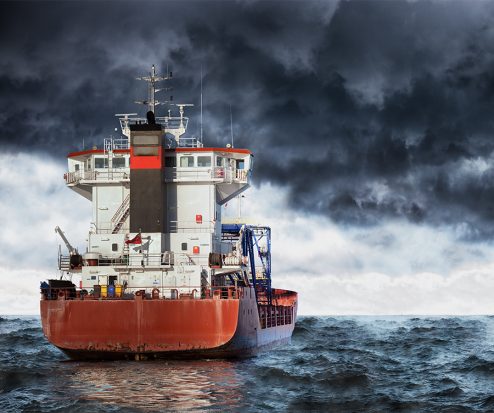As the first signs emerge of enforcement action linked to disgraced Singapore oil trader Hin Leong, court documents have revealed the extent to which the company had become dependent on fake trades, forged documents and dubious financing to help cover up vast accumulated losses.
The collapse of the company – a home-grown operation that grew to become one of Asia’s largest fuel trading houses – sent shockwaves through the commodity finance industry.
Problems first arose in April, when founder Lim Oon Kuin revealed to investors that the company had suffered undisclosed losses of more than US$800mn, and that oil pledged as collateral for lending had also been sold.
There had been little response publicly from Singaporean authorities until an announcement from city state’s police force last week revealing that Lim, who founded the company in 1963 and acted as chairman until its collapse, has been charged with forgery.
Police say Lim demanded a company employee forge a document purportedly issued by Universal Terminal, a fuel storage company also owned by the Hin Leong Group, to support the sale of more than 1 million barrels of gasoil to trading giant China Aviation Oil in Singapore.
“The document was allegedly used to secure more than US$56mn in trade financing from a financial institution,” says a statement from the police force’s public affairs department. Investigations into other potential offences are ongoing.
It already appears that document is only the tip of the iceberg for Hin Leong.
A review of the company’s activities and finances carried out by interim judicial managers PwC – submitted to Singapore courts in June and seen by GTR – paints a damning picture of a company that had become reliant on fraudulent transactions and forging documents “on a massive scale”, simply to keep repaying earlier debts.
“As constant liquidity was needed to conceal accumulated losses, the company obtained financing from banks through a variety of financing schemes structured around the sale and repurchase of cargo at a loss,” the PwC review says.
“Not only did these schemes appear to have no commercial benefit for the company apart from the generation of additional liquidity, some of these schemes also involved the use of forged documents, non-existent inventory, or the sale of the same inventory to multiple parties.”
The result is liabilities to banks and other creditors that total around US$3.5bn, and more widely, a sense of nervousness running throughout the commodity finance sector.
ABN Amro, whose exposure to Hin Leong was second only to HSBC, has this month announced a complete withdrawal from the trade and commodity finance market, while others – notably Société Générale and BNP Paribas – are consolidating activities or placing a block on new clients.
A “vicious cycle” of fraudulent trade
The PwC report describes in detail the different ways in which Hin Leong set up fraudulent trade transactions in order to obtain financing from banks.
Underpinning it all was an accounting process that PwC describes as “similar to what is known as ‘teeming and lading’”, where funds received from one customer are allocated to a previous customer’s account in order to inflate receivables balances and cover up losses.
Operating in a similar way to pyramid or Ponzi schemes, this process has to be continually repeated to avoid those losses ever becoming visible in the company’s accounts.
“In order to sustain this scheme, the company needs to ensure that it can continue obtaining funds from banks through discounting or other forms of financing to generate liquidity and cover up the losses,” the report explains.
“This creates a vicious cycle, whereby financing is required to sustain the scheme, which gives the false impression of the company’s financial health, which in turn allows the company to obtain further financing, thereby perpetuating the scheme.”
In practice, Hin Leong obtained that financing by a variety of means.
For instance, in some cases the company arranged transactions where it would sell a cargo to another party, then immediately buy it back at a lower price.
There were sometimes multiple companies involved, with Hin Leong selling cargo to one trading company then re-purchasing the same cargo from another.
Despite being loss-making, each transaction would produce another injection of liquidity through financing extended by banking partners.
Sometimes the company would sell more cargo than it actually had, PwC adds, or even sell and re-purchase cargo that never existed in the first place.
Detecting those discrepancies was difficult, however. Vessels would typically be chartered by Ocean Tankers, also owned by the Hin Leong group, meaning supporting documentation was being supplied by another arm of the same overarching company.
The report includes specific examples of questionable transactions that occurred in early 2020, shortly before the company’s collapse.
One example from this year details what happened to a cargo on board a vessel travelling from Tanjung Pelepas in Malaysia to Rotterdam in the Netherlands. The report says several parties have since declared an interest in that cargo.
According to PwC, the same individual cargo appears to have been involved in several separate transactions running in parallel.
First, in mid-March, Hin Leong agreed to sell 780,000 barrels of ultra-low sulphur diesel to Unipec, supported by a letter of credit issued by Crédit Agricole.
Later in the month, the company obtaining financing from Société Générale to sell 780,000 barrels of oil to trading giant Glencore, which would be re-purchased immediately by Hin Leong. In that case, letters of credit supporting the two transactions were issued by Rabobank and DBS Bank.
Around the same time, Hin Leong also agreed to sell a similar cargo, on board the same vessel, to Trafigura. The cargo would be sold on to Winson Oil, then re-purchased by Hin Leong. In that case letters of credit were issued by Natixis and OCBC Bank, though details of the Trafigura-Winson sale are not known.
The report points out that bills of lading used to support all three trading arrangements “bear the same vessel name and aggregate cargo”, and differ only in date. Unipec, Glencore, Trafigura and four banks have all since submitted claims to that cargo or requested additional documentation.
Inventory finance, factoring and forged documents
Hin Leong’s fraudulent financing was not restricted to bank-issued letters of credit. The company is also accused of overstating its inventory balances in order to obtain other lines of finance, alongside forging sales invoices to secure factoring facilities from banks.
The PwC report says that Hin Leong obtained inventory finance facilities by pledging cargo it did not own or that did not exist, by exaggerating the quantity of cargo that it did own, and potentially by selling inventory that was supposed to be held as collateral for another party.
One mechanism the company allegedly used was to sell fuel stored at Universal Terminal – also Hin Leong-owned – to a bank, with the understanding it would re-purchase that fuel at a later date and at a lower price. In effect, such agreements provide a form of short-term financing known as commodity forward arrangements.
However, for one such arrangement in March and April this year, the re-purchase was never completed by Hin Leong. Upon investigation by the bank, the quantity of inventory actually held by the company was much lower than it had claimed.
The report estimates that for the financial year ending October 31, 2019, the company’s financial statements overstated the value of its inventory by at least US$809mn. Investigations are ongoing into the extent of these practices and whether they also existed in previous years.
PwC also sets out Hin Leong’s techniques for obtaining factoring facilities. The company would start by preparing a contract showing an agreed sale to another party, along with that party’s invoice and the bill of lading.
Those documents would be presented to a bank offering receivables purchase facilities. Hin Leong would receive early payment of that invoice, giving it an injection of liquidity for several weeks until the transaction was concluded.
The report identifies instances where those original sales invoices were fabricated, however. Two specific cases have been identified where forged documents allowed Hin Leong to obtain around US$112mn under a receivables purchase facility despite there being no legitimate underlying trade.
Ultimately, the report says that in order to facilitate these fraudulent transactions, Hin Leong “fabricated documents on a massive scale”. PwC has already identified forged bank statements, bills of lading, sales contracts and invoices, deal settlement slips and other documents.
“The scale and regularity of the fabrication suggests that the practice was routine and pervasive,” it says, adding that forgeries were so common that PwC has been unable to take any documents held by Hin Leong at face value.
As of June this year, the judicial managers had identified export contracts presented to 15 banks, in relation to 58 import letters of credit, that were “not supported by any underlying sale transaction”.
What’s next?
Despite the scale of the alleged fraud carried out by Hin Leong, and its “massive unsustainable debt”, the report says some parts of the company could yet be salvaged.
There has been interest in acquiring shares or assets owned by Ocean Tankers and Universal Terminal, for example, and there are also potential investors interesting in exploring whether an injection of equity into the Hin Leong group could salvage it as “an integrated downstream trading platform”.
Its remaining inventory is believed to be worth around US$142mn, the report says, and the group owns several valuable vessels including four large crude carriers that are used as floating storage units. Those assets are already subject to competing claims for several parties, however.
PwC says it has not encountered potential investors willing to provide equity into Hin Leong as a standalone company.
The report recommends that Hin Leong, Ocean Tankers, Universal Terminal and two other group-owned companies should be “put together as an integrated petroleum trading platform, for any viable restructuring or rehabilitation to be carried out for the benefit of the creditors of the company”.





